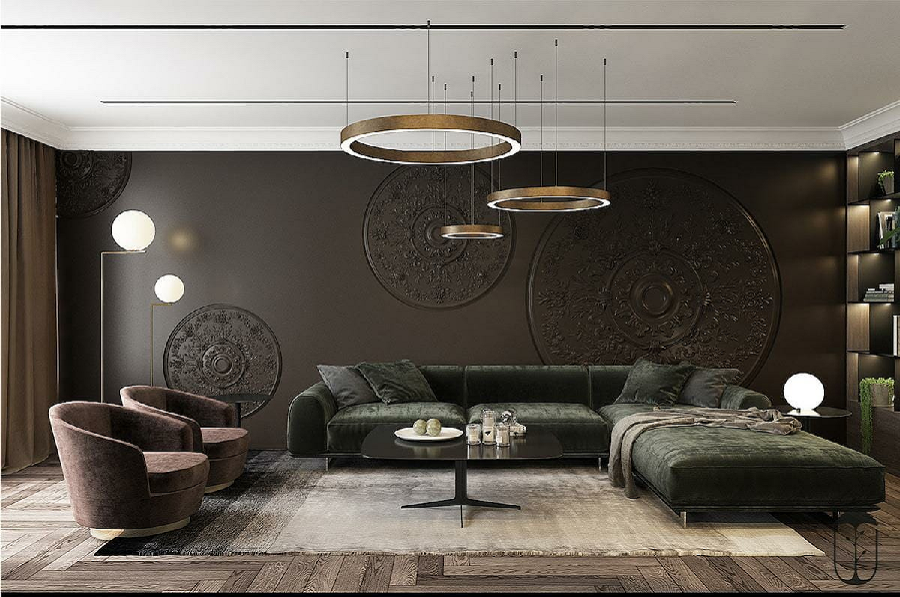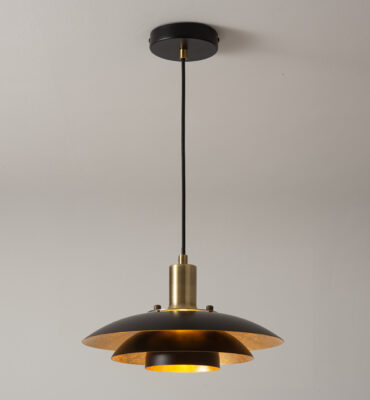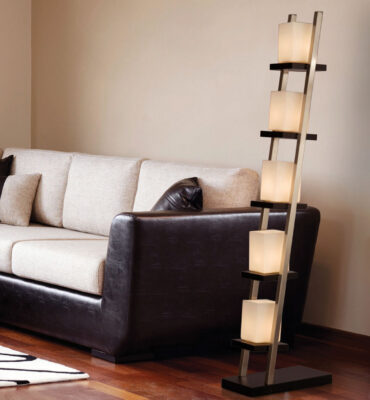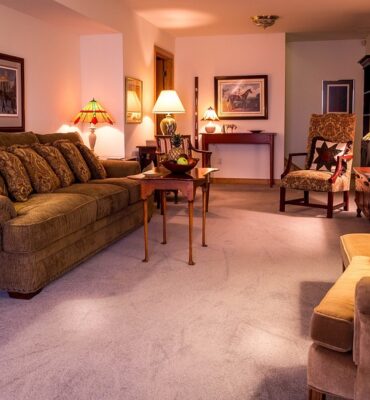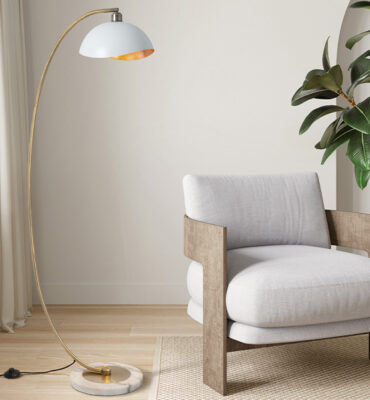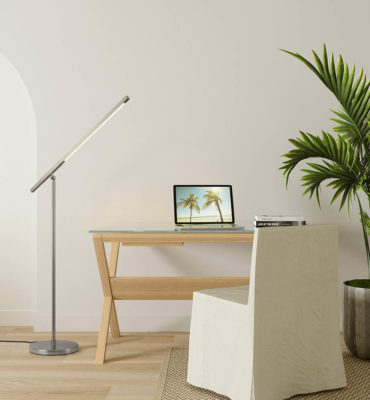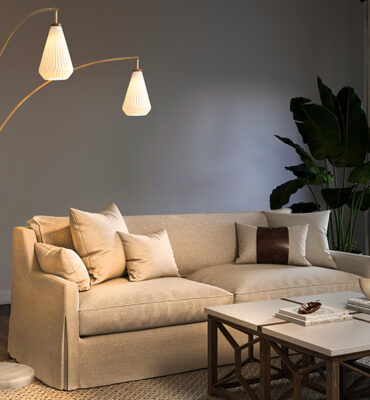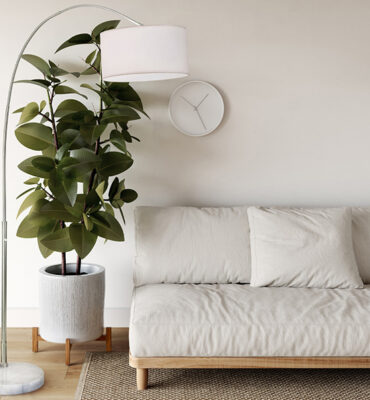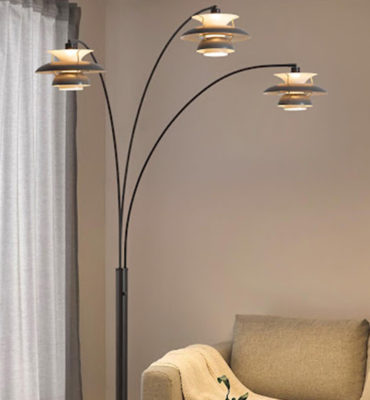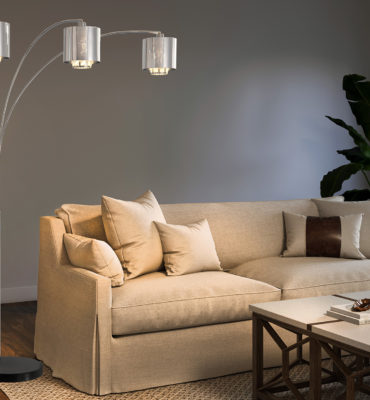When it comes to interior design and creating a warm, inviting ambiance in your living spaces, lighting plays a crucial role. The right lighting fixtures can transform a room from mundane to magnificent.
Let’s delve into the lighting world, focusing on four key elements: floor lamps, table lamps, wall sconces, and shades. From understanding their distinct characteristics to learning how to choose the perfect fit for your space, we’ve got you covered!
Floor Lamps: Illuminating Your Space from the Ground Up
The Versatility of Floor Lamps
Often hailed as the anchors of quality interior design, floor lamps bring a unique blend of functionality and aesthetics to any room. They stand tall, providing ample illumination while also serving as decorative pieces. Here’s why you should consider them:
- Multiple Light Directions: Floor lamps often come with adjustable heads, allowing light to be directed where you need it most.
- Space Fillers: They occupy vertical space, ideal for rooms with limited surface area.
- Ambiance Enhancement: Floor lamps create ambient lighting that can set the mood for relaxation or productivity.
Types of Floor Lamps
There’s a floor lamp for every style and need. Let’s explore some popular types:
- Arc Lamps: These lamps feature a curving arm, bringing light directly over a seating area. Perfect for cozy reading corners! They offer direct overhead lighting and one does not require an electrician and there is no need to punch a hole in your ceiling.
- Torchiere Lamps: With an upturned shade, these lamps bounce light off the ceiling for soft, indirect illumination. They are perfect for dark corners where recessed lighting is not present.
- Tree Lamps: They feature multiple adjustable arms, often with different shades, resembling a tree’s branches.
Finding the Right Spot for Your Floor Lamp
Location is vital when it comes to floor lamps. Consider these tips:
- Avoid Clutter: Place floor lamps where they won’t obstruct foot traffic or furniture placement.
- Balanced Lighting: Use floor lamps to supplement existing lighting sources and create a well-balanced glow.
Real-Life Example: The Cozy Corner Upgrade
Imagine transforming a dull corner into a cozy reading nook using an arc floor lamp. The adjustable light lets you dive into your favorite book while basking in the warm glow.
Table Lamps: Functional Elegance on Display
The Charm of Table Lamps
Table lamps are more than just light sources; they are exquisite decor items that add personality to your room. Here’s why you should consider them:
- Focused Lighting: Table lamps offer task lighting perfect for activities like working, writing, crafting, or working on a puzzle.
- Design Variety: With various designs available, Table Lamps become captivating centerpieces in your room.
Styles of Table Lamps
From traditional to modern, table lamps cater to various tastes:
- Tiffany Lamps: These lamps infuse a touch of vintage luxury and are known for their stained glass shades.
- Modern Minimalist: Sleek and simple designs that complement contemporary interiors.
- Mid-Century Modern: These designs harken back to the 1950s and 1960’s when form-led function and designers focused on quality materials.
Pairing and Placement
Pairing table lamps requires careful consideration:
- Symmetry: Use identical table lamps on either side of a console table for a symmetrical look or add one on each end table next to your sofa.
- Mix and Match: Combine different table lamp styles to create an eclectic vibe.
Real-Life Example: Bedside Beauty
Enhance your bedroom’s aesthetics and functionality by placing table lamps on your nightstands. Now, you can enjoy bedtime reading without the harsh glare of overhead lights.
Wall Sconces: Melding Light and Wall Decor
The Artistry of Wall Sconces
Wall sconces seamlessly blend illumination and wall art. Here’s why they deserve your attention:
- Space Savers: Wall-mounted, they free up valuable floor and table space.
- Ambient Drama: They create enchanting plays of light and shadow, adding depth to your walls.
Types of Wall Sconces
Wall sconces are versatile and available in various forms:
- Uplights: Direct light upwards, casting a warm, welcoming glow.
- Downlights: Illuminate downwards, ideal for focused lighting or highlighting specific features.
Placing Wall Sconces Creatively
Strategic placement can elevate your decor:
- Flanking Artwork: Frame paintings or artworks with wall sconces to draw attention.
- Hallway Elegance: Install sconces along hallways to create a sophisticated pathway.
Real-Life Example: Dining Delight
Imagine a Dinner Party bathed in the gentle radiance of elegantly placed wall sconces. They provide just the right light to set a comfortable and intimate atmosphere. They can also be used over console tables at the entryway.
Lamp Shades: Beyond Basic Coverings
The Role of Lamp Shades
Lamp shades are more than accessories; they influence the quality and mood of light. Here’s why they’re essential:
- Diffused Light: Lamp shades soften and diffuse harsh light, creating a gentle ambiance. Quality lampshades use heavier polystyrene backing to properly diffuse light and eliminate “hot spots” in the shade and unwanted shadows within.
- Decorative Element: The shades’ shape, color, and texture contribute to your room’s overall aesthetic.
Types of Lamp Shades
Lamp shades come in a range of styles:
- Drum Shades: Circular and versatile, they suit modern and traditional bases.
- Empire Shades: Tapered and classic, they evoke a sense of timeless elegance.
Matching Lamp Shades to Bases
Pairing lamp shades with bases is an art:
- Proportion Matters: Choose a shade that complements the base’s size and style. Ensure the harp’s bottom (the saddle) is not visible.
- Color Coordination: Coordinate the shade color with your room’s palette for a harmonious look.
Real-Life Example: A Creative Corner
Turn a corner of your home into an artistic haven by combining a uniquely patterned lampshade with a quirky base. Let your personality shine as the lamp becomes a conversation starter.
How to Choose the Perfect Lighting for Your Space
Assessing Your Needs
Before making lighting decisions, consider these factors:
- Function: Determine the primary purpose of the lighting fixture.
- Style: Ensure the fixture aligns with your room’s decor theme and is a reflection of your style
Lighting Layers
Creating layers of light adds depth and dimension:
- Ambient Lighting: General illumination to brighten the entire room.
- Task Lighting: Focused light for specific activities.
- Accent Lighting: Highlighting architectural features or artwork.
Budget Considerations
Quality lighting doesn’t have to break the bank:
- Invest Wisely: Splurge on statement pieces and save on secondary fixtures.
- DIY Options: Get creative with DIY lighting projects to save money.
- Quality: Consider buying a quality luminaire that will last you a long time, rather than buying cheap quality products that will end up in the landfill in a year.
Real-Life Example: The Ultimate Living Room
Imagine a living room where a combination of floor lamps, table lamps, and wall sconces work in harmony. The layered lighting creates a multifunctional space perfect for relaxation, work, and socializing.
Conclusion
In interior design, lighting is not just functional—it’s an art form. Floor lamps, table lamps, wall sconces, and lampshades bring unique magic to a room. By understanding their characteristics, styles, and placement techniques, you can illuminate your space in ways that elevate its aesthetics and functionality. Thus, let there be light, and let it be a reflection of your style and personality.



